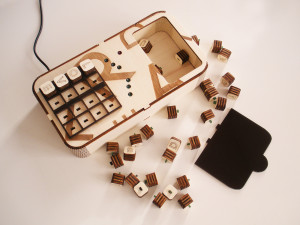Abstract
Luminate is a social mobile app geared at providing designers with a platform for finding and sharing illuminating ideas and feedback. Luminate was designed to be a fun source of inspiration, built on community driven content and a framework that is dynamically shaped to complement its users’ interests.
The structure of the app is defined by its content, whereby a user can access content that is produced and curated by the community. This content can consist of both images and text. In particular, the app provides a fun question and answer based approach to discussing topics such as design techniques, recommended materials as well as overall style.
Interface, interaction modality and user experience
Luminate’s visual design is fresh, sleek and bright, to match its modern and inviting persona. It uses a basic colour scheme, coupled with a dynamic accent. This visual language is consistent throughout the application, and is delivered in combination with sharp, clean fonts to facilitate readability and accessibility of content.
The application has a clear and easy-to-use interface that aims to encourage users to participate in the dialogue. The user can post comments and support other community members through a ratings system. Upon registration, each member can become part of the community and contribute to the generation of relevant and specialised content. The user can then post projects and get illuminated on his/her own designs.
Browsing content is classified according to criteria including time of publication, popularity and categories.
The application’s user interface utilises built-in smartphone actions and gestures.
Technology
Luminate has been prototyped using the InVisionApp.com web service. Luminate runs on iOS, and is compliant with iPhone 5 layout standards and requirements.
inVision link: http://invis.io/N51IUIUP7
Research and development context
We first defined the context of existing comparable social applications for designers and design savvy users. Our definition drew from designer geared platforms including Dribbble for content, and fun, easy apps like Jelly and Tinder for interaction.
We then conducted a series of face-to-face interviews with a selection of potential users including students and professionals active in the field of design. Our research found that prospective users value having a system that supports and simplifies their own research, since finding inspiration as well as relevant technical information can be unorganised and time-consuming using conventional search methods. The support of a network of like-minded people to whom they can refer to when in need of advice was also a valued criterion.
Following our initial research phase, we implemented preliminary designs for the application in the form of wireframes and hero flow, that were eventually used to translate our visual design into a usable application prototype.
Upon carrying out a hands-on testing experience of our prototype with our sample users, we discovered that users prefer quick and immediate access to the app in order to utilise its core function on-the-go. Users also communicated a strong desire to incorporate valuable content with a fun and easy ‘inspiration’ experience in the form of a discovery game. Potential approaches to realise such interactions include a challenge function, whereby designers can directly invite a selected group of users to participate in answering specific questions within a limited amount time, or a “luminate me!” function to get random or “popular” posts on the fly for some snappy inspiration.


